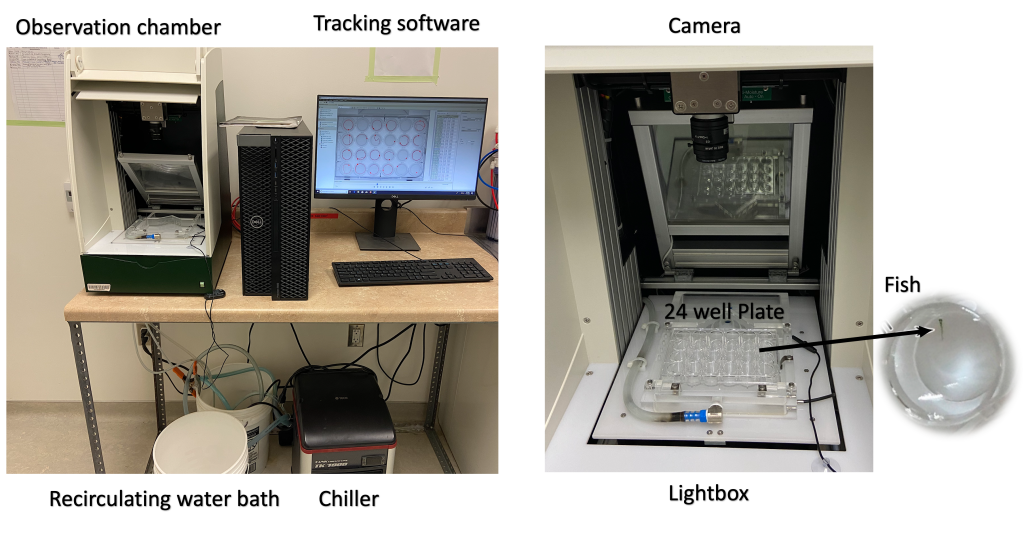Contaminants in the Sacramento Deep-Water Shipping Channel
The Sacramento Deep Water Ship Channel (SDWSC) is a canal that connects the Port of Sacramento, located in West Sacramento, to the Sacramento River. It provides important habitat for Delta Smelt, an endangered fish species endemic to the Sacramento-San Joaquin delta and other aquatic life. Over the past 40 years, their abundance has declined drastically due to climate change, habitat loss due to human activity, water diversions and pollution from runoff water.
One concern is the presence of HOCs, Hydrophobic Organic Contaminants, a class of contaminants known for their persistence in the environment and their tendency to accumulate in sediments and aquatic organisms. The Segarra Lab aims to investigate how exposure to HOCs might impact early life stage Delta Smelt.
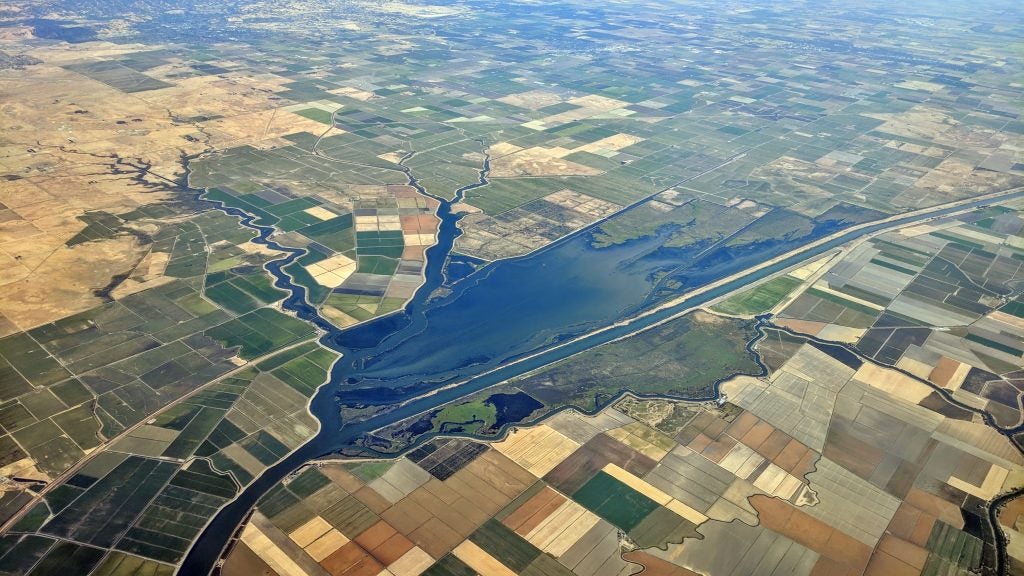
Spectrum Framework
The Segarra Lab is collaborating with the Lydy Lab at SIU to measure the effects of insecticides on Chinook Salmon. Louise Cominassi, a postdoc, is observing the physiological and behavioral effects of two commonly used insecticides. This data will provide a framework of reference for law makers to know how the pesticides we use today might be affecting aquatic life. Below on the left Chinook Salmon are exposed to Bifenthrin, the most commonly used insecticide. On the right, Louise measures swimming performance.
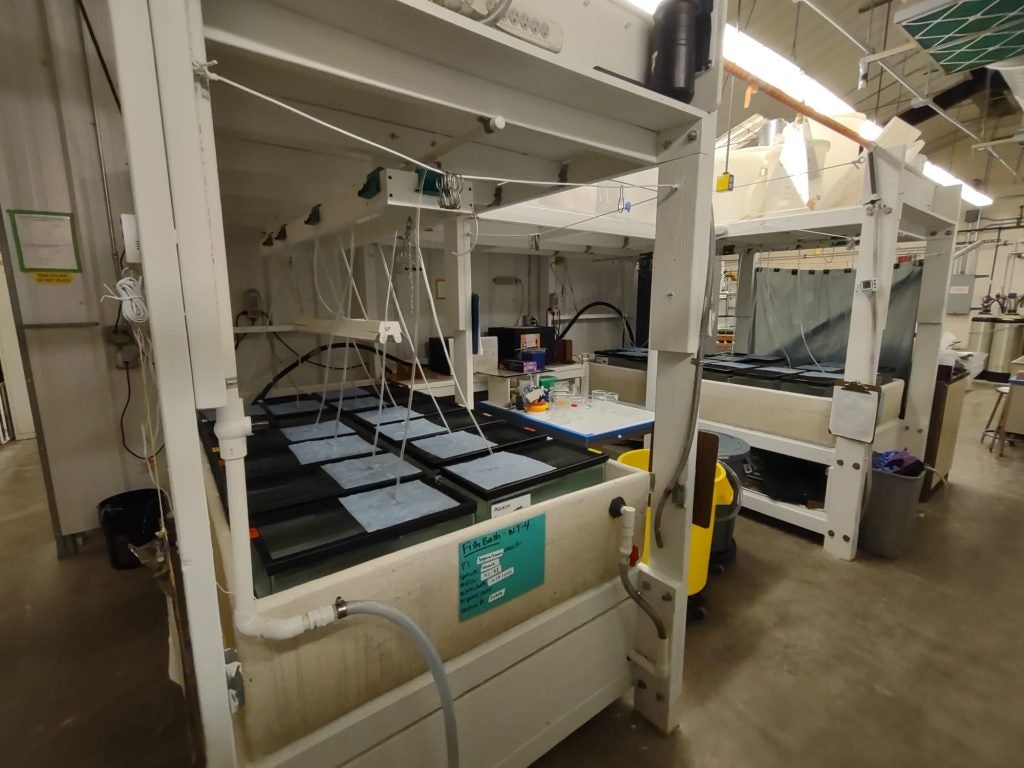
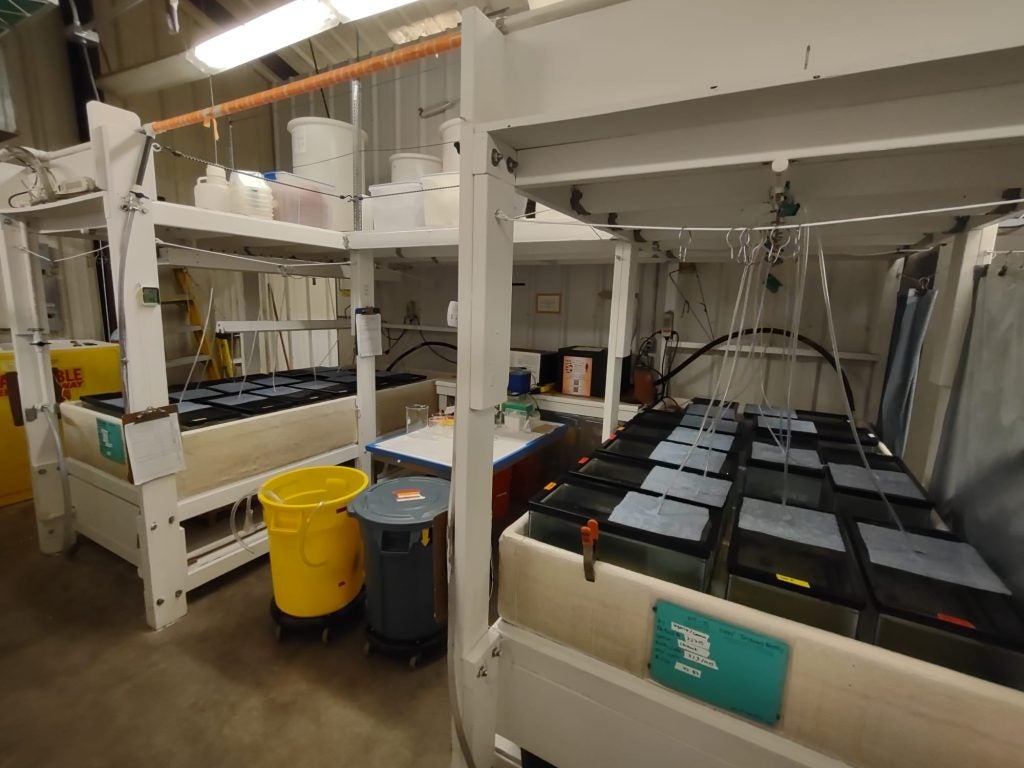
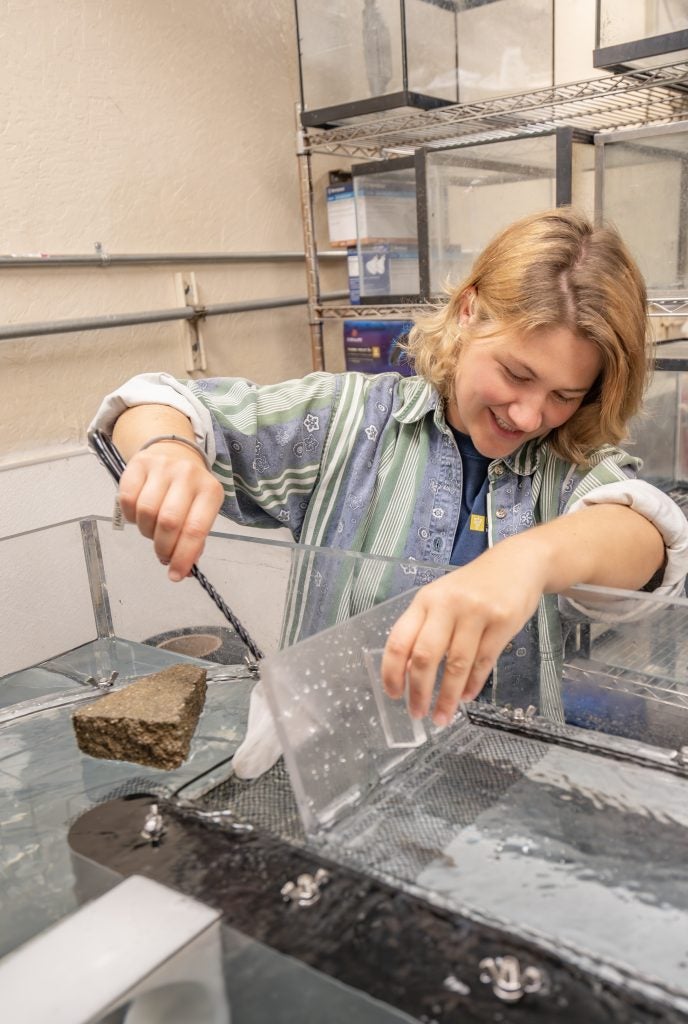
Chinook Salmon behavior is also recorded and analyzed. Here you can see our Ethovision system at work tracking the movements of each individual fish.
Spectrum Framework 2.0
To provide a better understanding of how Chinook Salmon accumulate pesticides in the wild, Post-Doc Louise Cominassi has deployed cages of juvenile Chinook Salmon in areas of interest around the Delta. After a few weeks of living inside the cages, the fish are collected and analyzed for pesticide body burden (amount of pesticide accumulated within the body). While other studies have measured environmental concentrations of pesticides, this study is unique because it focuses on the amount of pesticide the fish are accumulating within the body.
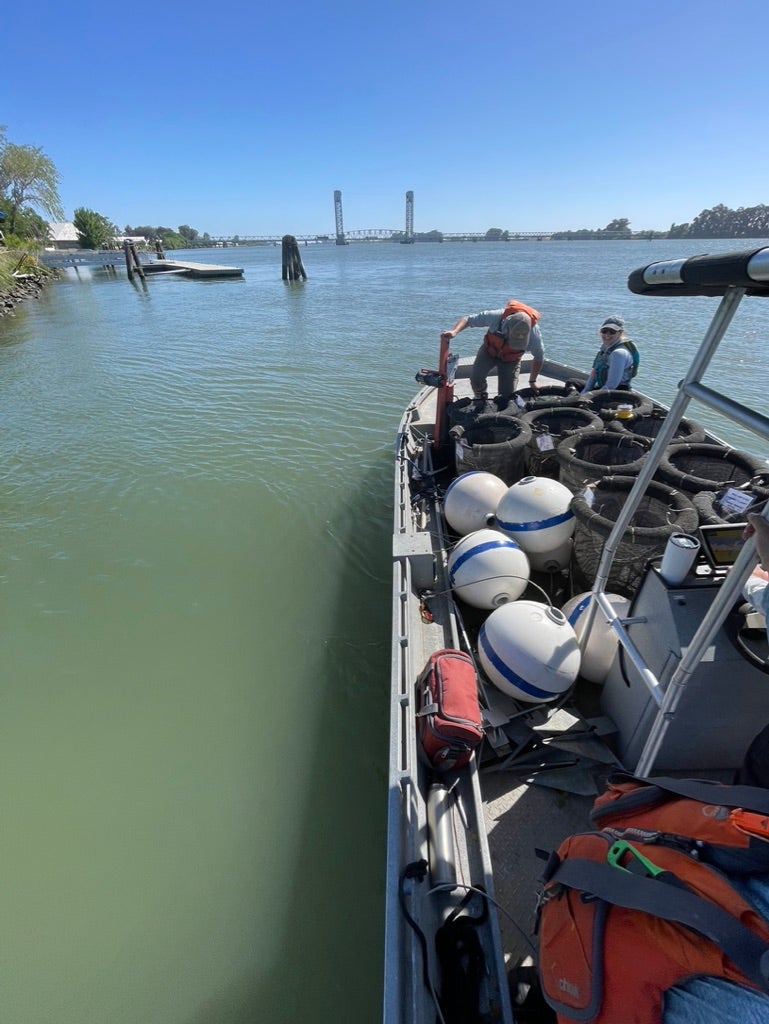
(Top and Right) Louise Cominassi and the Fangue Lab boat crew deploy cages.
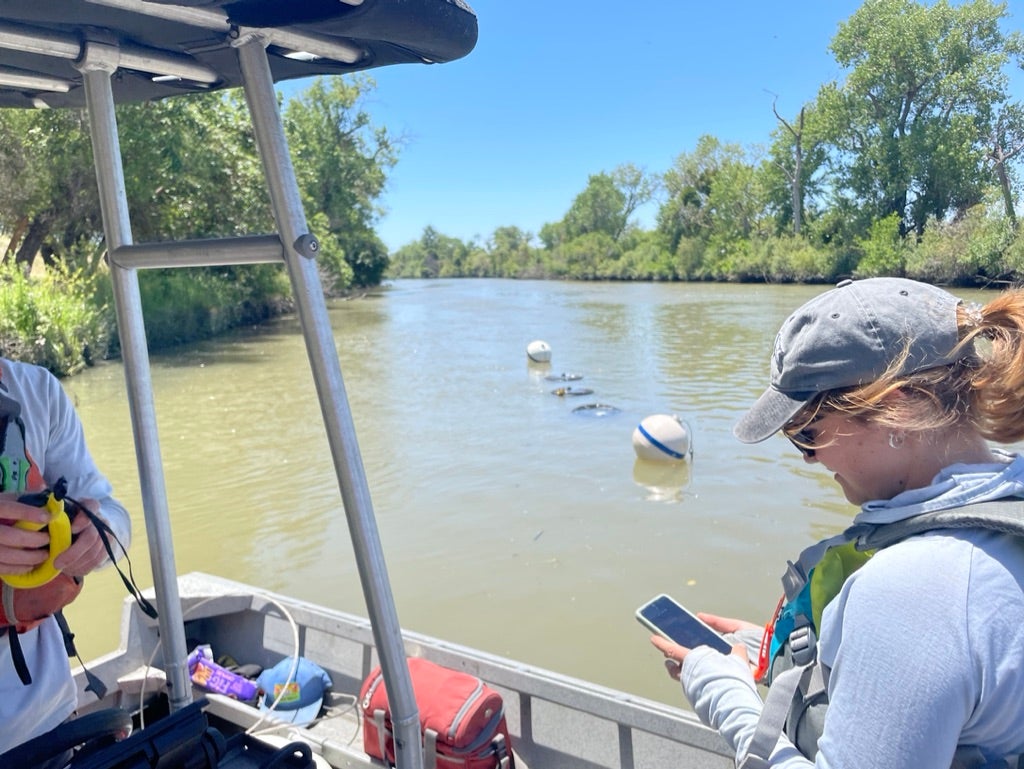
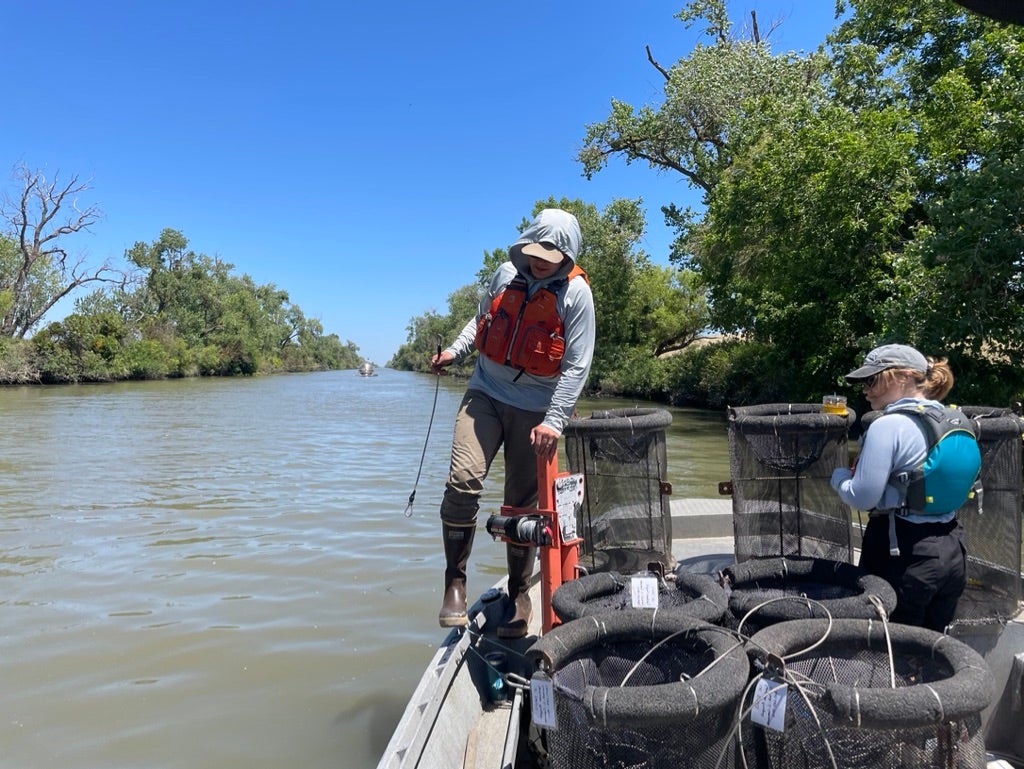
When it Rains, it Pours – Stormwater Contaminants
During the wet season in California, rain washes agricultural runoff and other contaminates into aquatic ecosystems. This is especially apparent in urbanized areas, such as the California Bay-Delta system. In addition, rainy season coincides with the spawning of fish species of concern.
In the stormwater project Delta Smelt, a small fish endemic to the SF Bay-Delta system, are exposed to stream water before, during and after a rainstorm.
To study behavior on small fish, such as Delta Smelt larvae, we use a system called DanioVision to record the fish on a temperature controlled well plate. The recording is then analyzed by tracking software.
